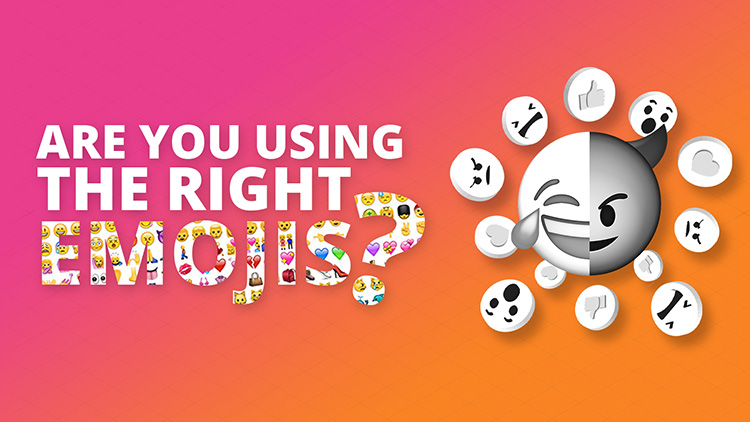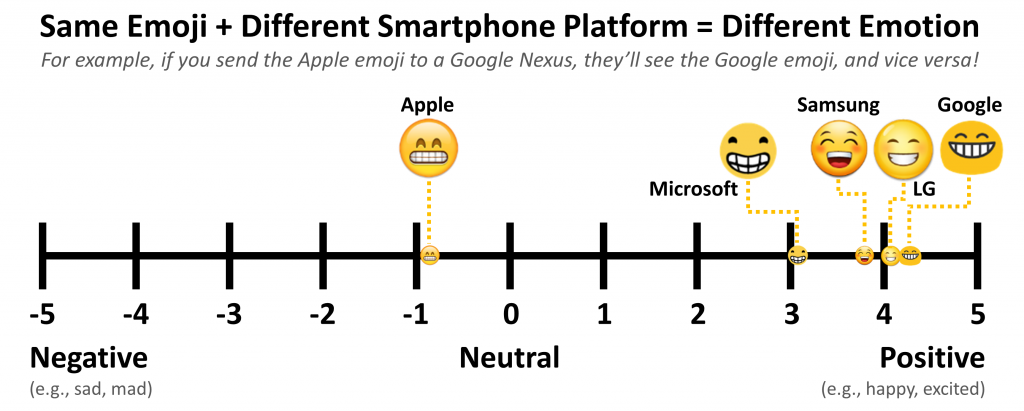Blog
CATEGORY: email-marketing
Are you using the right emojis? 😕

In January the Unicode Consortium announced 117 new emojis for 2020. Chances are you have used an emoji or two in you communications 😊, but perhaps you have not considered using it in your email subject lines 🤔.
We’ll come back to that in a bit, but first for a bit of history 📜:
Definition
Emoji are ideograms and smileys used in electronic messaging and web pages. They are much like emoticons, but emoji are actual pictures instead of typographics (e.g :) or ;) ). Originally meaning pictograph, the word emoji comes from Japanese e (絵, "picture") + moji (文字, "character").
As a concept the emoji has been building momentum since the turn of the millennium, as a way of including the kind of tonal and non-verbal cues that we understand intuitively in ‘real life’ communications. And though their intention is to make communication clearer, this is not always the case 🤭.
History
Emojis first appeared on the scene in the late 1990’s in Japan, where mobile phone companies, inspired by symbols used in comics and Japanese weather forecasts, attempted to fill an opening in the thriving mobile phone marketplace.
In 1998 Shigetaka Kurita created the first 180 emoji collection for a Japanese mobile web platform, and the concept spread from there.
Initially, each individual phone, or individual service provider had their own set of emojis. However, compatibility issues arose when communicating from network to network, particularly in different world regions.
In 2010, the Unicode Consortium decided to incorporate emojis into Unicode, and the outcome was inevitable…
With tech giants Adobe, Apple, Google, Facebook, Huawei, IBM, Microsoft, Oracle, and Yahoo all active members of the Unicode consortium and their combined market share of global digital communications, the Unicode emoji set was destined to become the universal gold standard.
By 2014, there were a total of 722 emojis in the standard Unicode 6.0 set. In 2020, set 13.0 is due to be released.
Word of the Year
In 2015 The Oxford Dictionary named the “face with tears of joy” emoji as its word of the year. And whilst some people may have been surprised by this slightly controversial move, to many this unorthodox choice made total sense – as an illustration of modern language.

Oxford Dictionaries President Caspar Grathwohl expressed that "traditional alphabet scripts have been struggling to meet the rapid-fire, visually focused demands of 21st Century communication. It's not surprising that a pictographic script like emoji has stepped in to fill those gaps—it's flexible, immediate, and infuses tone beautifully."
Indeed in the press release that accompanied the announcement the team stated
“Although emoji have been a staple of texting teens for some time, emoji culture exploded into the global mainstream over the past year. Emojis have come to embody a core aspect of living in a digital world that is visually driven, emotionally expressive, and obsessively immediate.”
“Blissfully happy” or “ready to fight”
Even though emojis are commonly used in modern text communication, as graphics with nuanced details, emojis remain open to interpretation 😜. They also render differently on different viewing platforms (e.g., Apple’s iPhone vs. Google’s Nexus phone), potentially leading to communication errors 😕.
To find out how the variations impact the way people interpret emojis and conversation, researchers at the University of Minnesota’s GroupLens research labconducted a survey using 22 human-like emojis across Apple, Google, Microsoft, Samsung, and LG platforms. Researchers asked 334 participants five questions, including what they considered the sentiment to be (positive or negative on a scale of -5 to 5), and when they would use the emoji in conversation.
The research was published in the paper “Blissfully happy” or “ready to fight”: Varying Interpretations of Emoji.

The grinning emoji had a wide range of sentiment misinterpretation across platforms, and researchers found many other differences in the way people described emoji, both in words and feelings of positivity or negativity.
Cultural interpretations
Another impact on understanding is locality and culture. With their origins in Japan there are even some cultural references that could be missed entirely by Western users. For example the white flower 💮- While this emoji seems simple on the surface, since it is reminiscent of a cherry blossom, it actually has a deeper meaning thanks to the Japanese writing inside (though it isn’t included in all versions of the emoji) which roughly translates to “well done” or “you did very well.”
Teachers in Japan often use a stamp with the symbol to mark school work that met a high standard, so consider it an appropriate option when offering “kudos” to a member of your team for a job well done.
Indeed there are a numerous articles detailing emoji meanings that are often misunderstood.
How to have confidence in your emojis
Emojipedia is a reference website which documents the meaning and common usage of emoji characters in the Unicode Standard. Emojipedia also publishes articles and provides tools for tracking new emoji characters, design changes and usage trends 👍.
Emojipedia is also a voting member of The Unicode Consortium and has been called "the world's number one resource on emoji".
Jeremy Burge created Emojipedia in 2013, and told the Hackney Gazette "the idea came about when Apple added emojis to iOS 6, but failed to mention which ones were new".
So, if you want to know more about the 117 New Emojis for 2020, have a read.

So now you know a bit more about the history and theory of emojis and most importantly how to find and understand them properly; how can you utilise them in your emails?
The “emoji effect” is just one of more than 50 areas we look at as part of our Email 2020 course, or read more in Emoji Effect – Symbols in the subject line.
Solutions
Email marketing healthcheck
We are confident that we can help you, which is why we offer a free healthcheck to identify potential issues with your current programme and free advice on things that could be done to improve it.